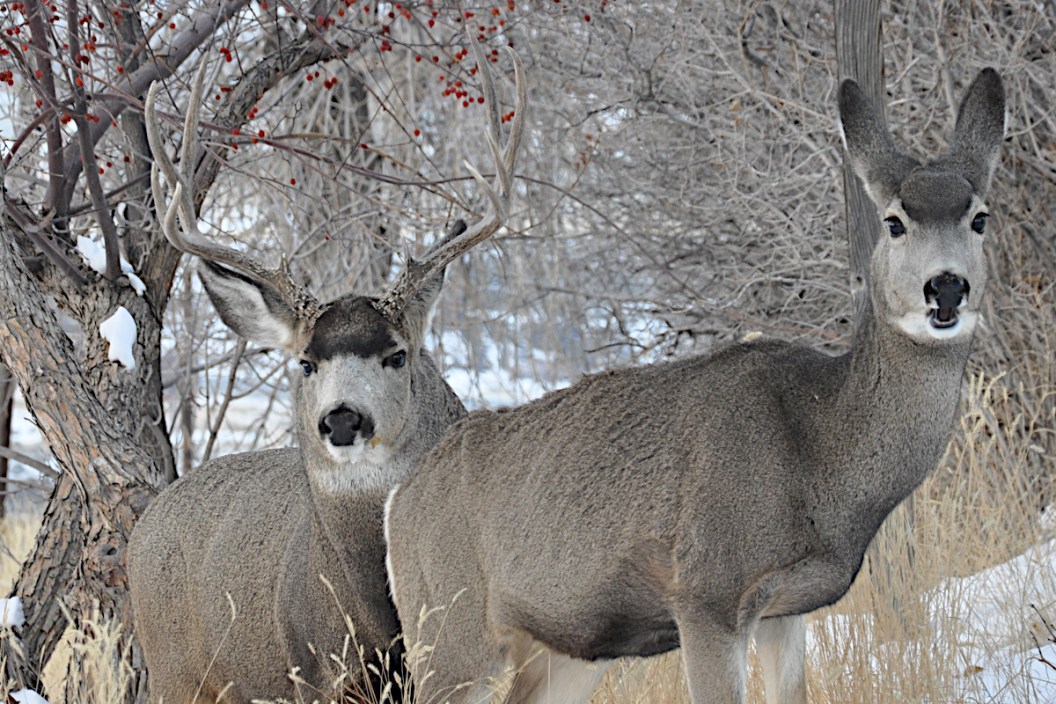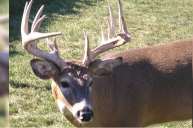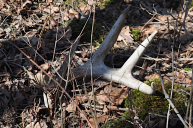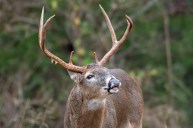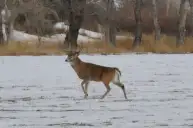How to hunt pressured mule deer.
Deer hunting is always tough. But put a bunch of hunters in the field and the difficulty factor goes up several notches. Hunting pressure is one of the most difficult things to overcome in search of that big mule deer buck. Especially on public land.
When the going gets tough in hunting season, you've got to think strategically and be willing to adapt to find the mature bucks.
Here is how to hunt pressured North American muley bucks using a few tips and tricks made popular by whitetail hunters in the Midwest.
Don't neglect the more urban areas
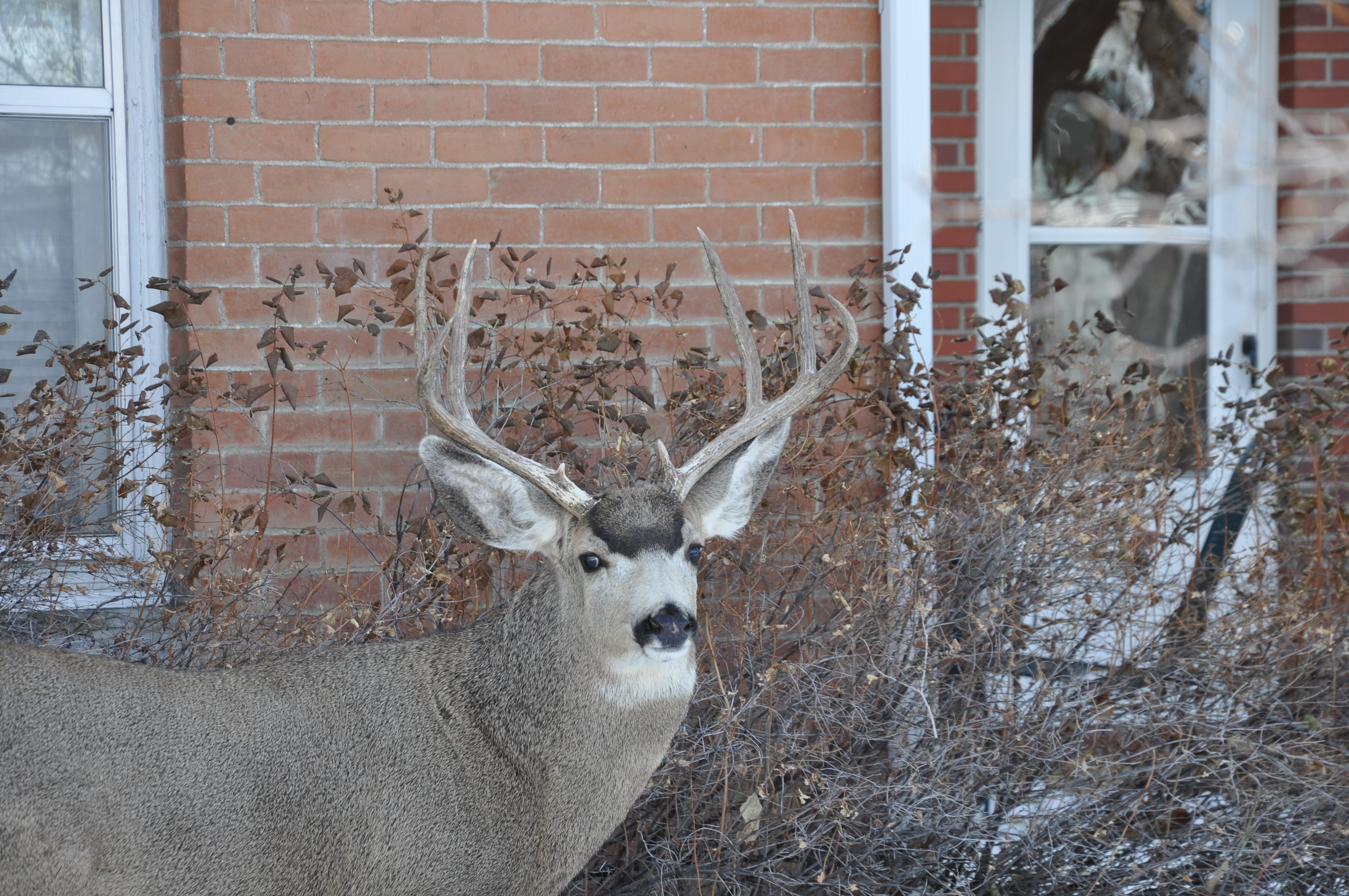
Travis Smola
When many hunters think of typical mule deer states, the thing of the open high country areas of big game states like Arizona, Colorado, Idaho, Utah, New Mexico, Montana or Wyoming. While there are plenty of big bucks to be found in the backcountry, many hunters ignore the deer habitat close to urban areas.
I lived in a moderate-sized Wyoming town for a short time (population around 10,000). While there were lots of big muley bucks running around the countryside outside the city, I was astounded by how many big bucks were living IN the city! And why not? They're safe from hunters there.
There's plenty of food in people's yards, gardens and backyard bird feeders. When the snows come, there's a treat in the delicious salt that is dropped on the roads. I watched deer several times at intersections just going to town after the plow truck came through. For the deer, it sure beats chewing on frozen sagebrush all winter! During the rut, the does were concentrated in easily accessible areas for the bucks to find.
Now, you aren't going to be able to mule deer hunt in most of these locations. But, you could try tracking their paths as they move in and out of areas where hunting is allowed. It may be simple enough to catch on to the typical route a deer may take, even across
In addition, you could come across a small plot of private land somewhere near the outskirts where it may be legal to hunt with archery gear. Often, you'll find you have hunting areas like this all to yourself! Consider looking up property info and reaching out to landowners to see if it's a possibility.
The other great thing about most urban mule deer is that they don't usually migrate to winter ranges. They stay relatively close to home. This means you can take your time and put together a real game plan and strike at the perfect moment. Think outside the box a little bit and you may be able to put a big deer on the ground DIY-style without wandering too far from home!
Avoid the crowds
One way many whitetail hunters target pressured animals is by trying to "hunt the hunters" as much as you hunt the deer. The same principle applies to mule deer hunting. If you climb to a high vantage point with your spotting scope and start glassing only to see five other hunters doing the same thing, it's time to look for a new area.
Remember that these game animals are smart and will adjust their movements accordingly. You must think strategically. How will those hunters over that ridge affect the movements toward that sanctuary bedding area behind you? What route will provide the deer the best cover to make those movements to their bedding areas? Mature mule deer don't get large by being dumb. If you're noticing the activity of other hunters, the deer probably noticed before you did. If you see an ATV heading one way, it might be best for you to head the opposite direction.
As much as you need to observe what other hunters are doing, you must make sure others aren't keeping an eye on what YOU are doing either. Be strategic on where you park your vehicle. You might want to park your pickup miles away from where you are actually hunting, especially on public land.
And if all else fails, you might have to venture deep into the backcountry. We're talking far enough back that you camp overnight and field dress your harvest in order to get it back out. Yes, this is a big time commitment and can be taxing physically, but in some high pressure areas, it may be the only way to put a big muley buck in the freezer.
Get in early and be strategic in your approach
Wherever you are hunting, you need to get there before anyone else. If you're still hunting and another hunter sneaks in after you, at least they'll push the deer in your general direction rather than the other way around!
Remember that in extremely high-pressure situations, many bucks will hole up during the daylight hours and stay active mostly at night. Again, this is something that happens with Midwest whitetails all the time. So, what do you do? You must find their travel routes to their sanctuary bedding spot, and intercept before they move into them for the day. That means getting into the field earlier than anyone else. In some cases, that might mean as much as an hour before sunrise to spot them from long-range.
Make sure you know where the deer are traveling from on these travel routes. Finding one does you no good if you bump the deer off the feeding area walking in the pre-dawn darkness. Very carefully plan your route to a prime ambush location. I know trail cameras aren't used as often for mule deer, but if you know a certain buck is frequenting an area, they can really help you pin down these movements and the times to be in position.
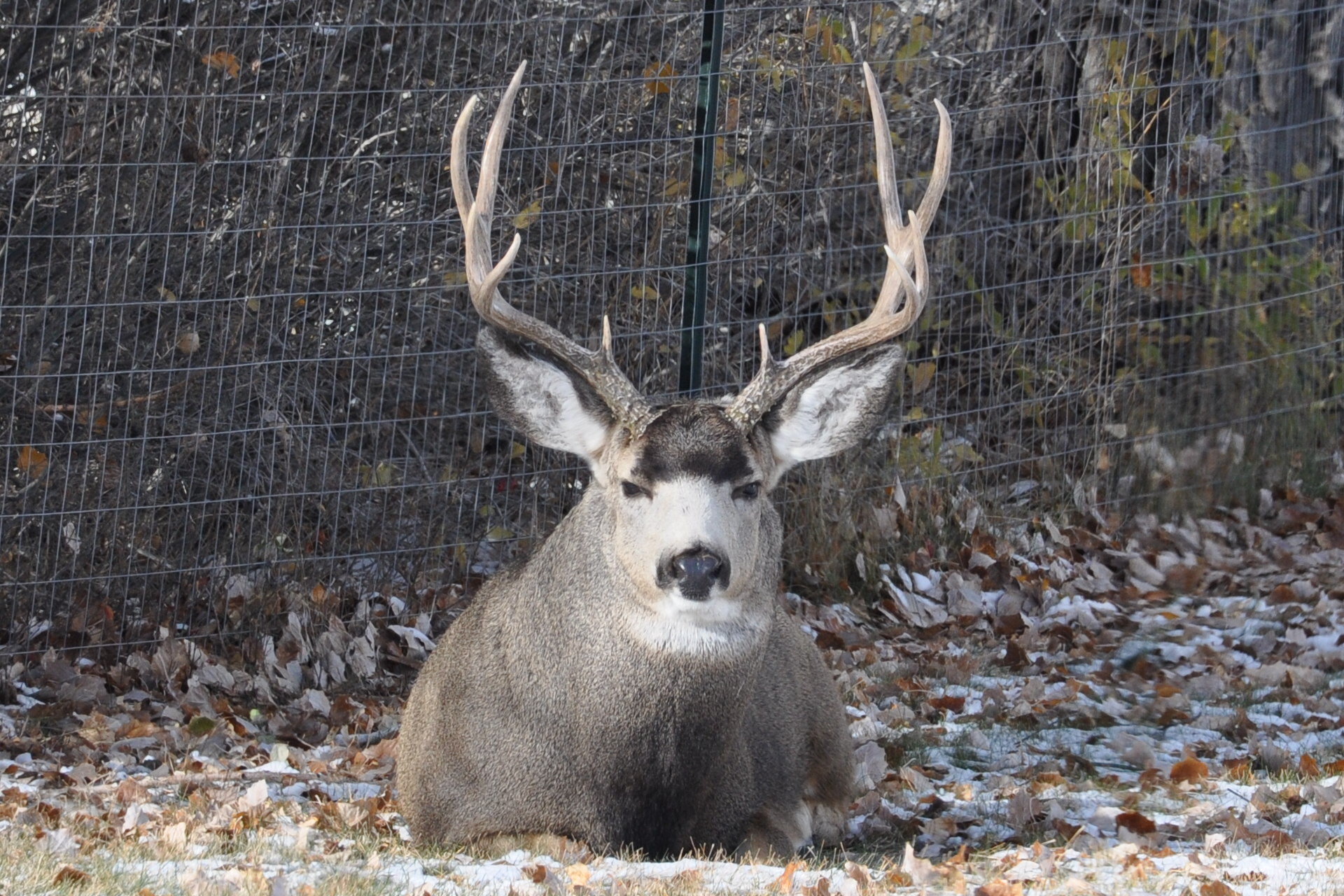
Travis Smola
Another option is to let the buck bed down and do a spot and stalk. Some hunters will recommend you NEVER enter a buck's bedroom. But sometimes, that's the only way you can get a legal shot on a wise old buck who only moves at night. We'd recommend trying it only if you're all out of options. Wait for a perfect wind and only move in if you're certain the buck is bedding there.
Oh, and remember what we said about watching to make sure other hunters aren't patterning you? Be careful with marking routes to your hunting spot. You don't want to clue someone in that you're onto a good thing with reflective trail markers. Use a good GPS unit and virtual breadcrumbs to make an invisible route to your spot instead.
Oh, and don't forget about staying out all day. This is a proven tactic for deer that get up and move at midday when other hunters leave the woods. If you're noticing others bailing out in prime mule deer country, that's the time to wait!
Get creative!
Sometimes you must think outside the box in order to put a big mule deer on the ground. One tactic that almost NEVER gets talked about for muleys is the use of a treestand. Everyone is on the ground still hunting or spot and stalking.
But if you can find one of those travel routes I just talked about, why not wait for that big non-typical buck to come to you? If you can find a suitable tree location, go for it.
Think about it. If you can find a spot where the deer are skirting around other hunters who are all still hunting, where is the last place that buck is going to look? Yep, up in a tree.
Have a ghost buck that seems to disappear every year before early season hunting begins, only to show up again after the hunting season is over? He's got a good hiding place somewhere. It may not be where you think. Don't neglect heavily thicketed areas near roadways where high desert mule deer can easily fly under the radar because the hunters are all up in the high country.
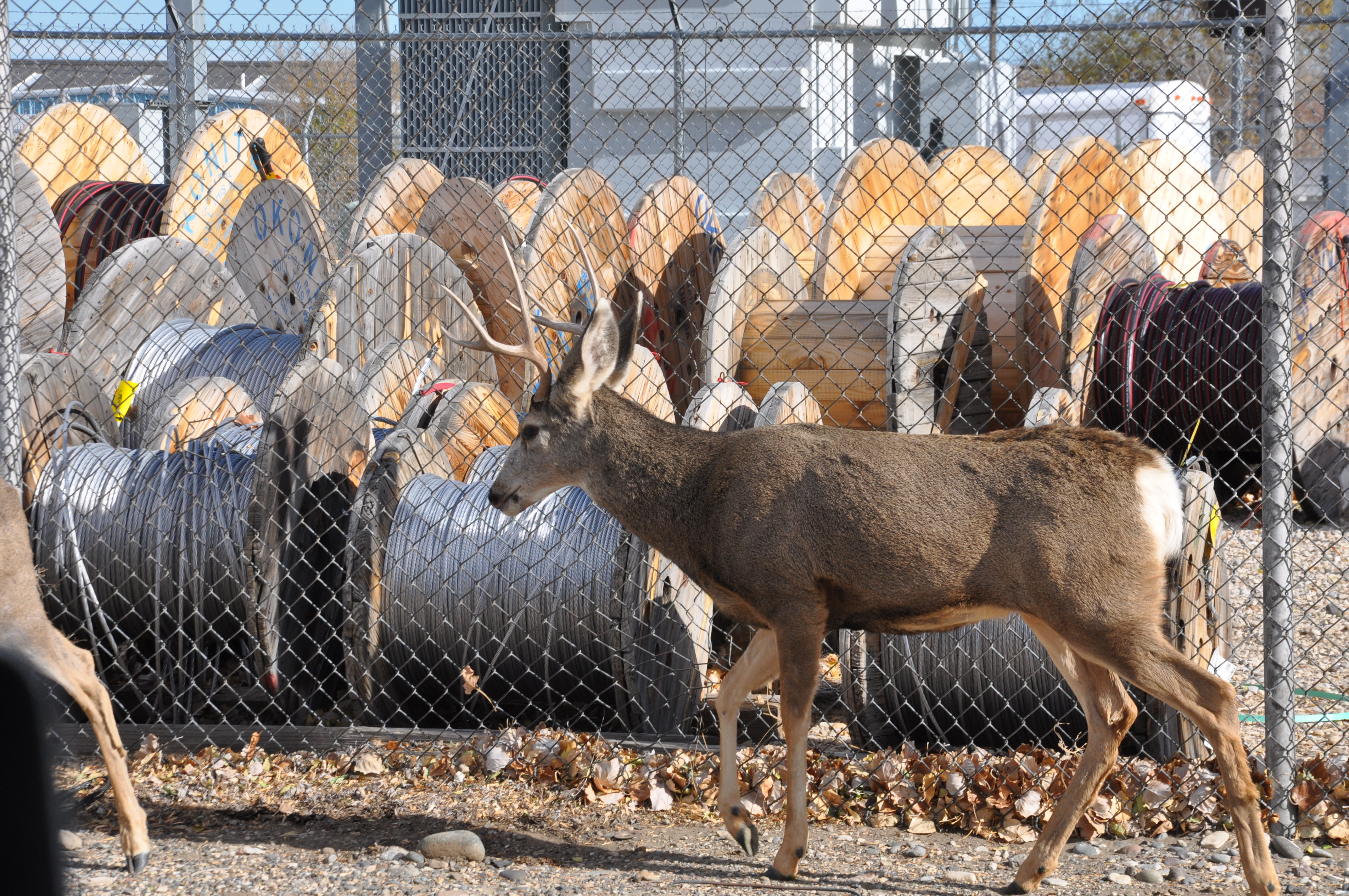
Travis Smola
Again, try some midwestern techniques if the bowhunting is slow. Get some friends together and try a deer drive. Don't be afraid to be adaptive to the situation. If you're a die-hard bowhunter but you just can't seem to get the bucks in range, there is no shame in picking up a muzzleloader.
If nothing is working and the deer seem too pressured to move, put yourself in the deer's shoes...or hooves. Where would you hide? When would you move?
It sounds silly, but sometimes the most obvious answer is right in front of your face. You just don't notice it because it goes against the norms of typical mule deer behavior.
For more outdoor content from Travis Smola, be sure to follow him on Twitter and check out his Geocaching and Outdoors with Travis YouTube channels.
NEXT: 5 SUMMER HUNTING TRIPS WE WANT TO CRAM INTO ONE MONTH
WATCH
